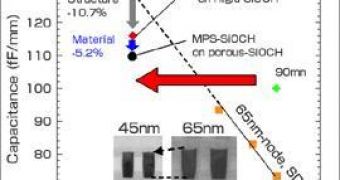Intel is building three 45 nanometer fabrics, introducing along the way the 65 nanometer quad-core Barcelona (Intel code-name: K8L) samples into mass production. D-1D in Oregon, Fab 32 in Arizona and Fab 28 in Israel are the next steps Intell is prepared to take. The combined investment for these three Fabs is worth well over $9 billion, money that are probably obtained after 10-12,000 employees worldwide were fired.
Although three fabs will make 45nm CPUs, Intel's 45nm push does not stop there. The company will also convert at least one Flash Fab to 45nm, and the most likely candidate is its D2 Fab in Santa Clara, showed The Inquirer.
AMD has still room to expand its current manufacturing capabilities in Dresden, Germany, but it seems they will build another high-capacity factory, based on the 32 nm chip. It will be based in New York, and the term of completion is somewhere between 2012 and 2014. The new factory will not only be one of the largest private sector industrial investments in New York State history, but apparently also one of the largest and highest capacity production facilities for microprocessors on a global basis. The new fab, without name so far, is scheduled for construction at the Luther Forest Technology Campus beginning in the time frame between July 2007 and July 2009 and will house a total of 1.2 million square foot of floor space. This size is equal to about 21 football fields and about 21% larger than Intel's currently largest fab (D1D, 989,000 square foot) and about the same size as Intel's currently constructed 45 nm Fab in Kiryat Gat, Israel.
The 45 nanometers technology is the next milestone in semiconductor manufacturing and fabrication. Intel was targeting 45 nm production in early 2008, and AMD and IBM are partnering on the 45 nm process. The term "45 nm" denotes the average feature size of the semiconductor. For reference, silicon lattice spacing is around 0.2 nm, synapses are typically around 50 nanometers across, the Human Immunodeficiency Virus [HIV] is around 120 nm in diameter, a human red blood cell is typically 6000-8000 nm in diameter, and a human hair typically is 80000 nm in diameter.

 14 DAY TRIAL //
14 DAY TRIAL //